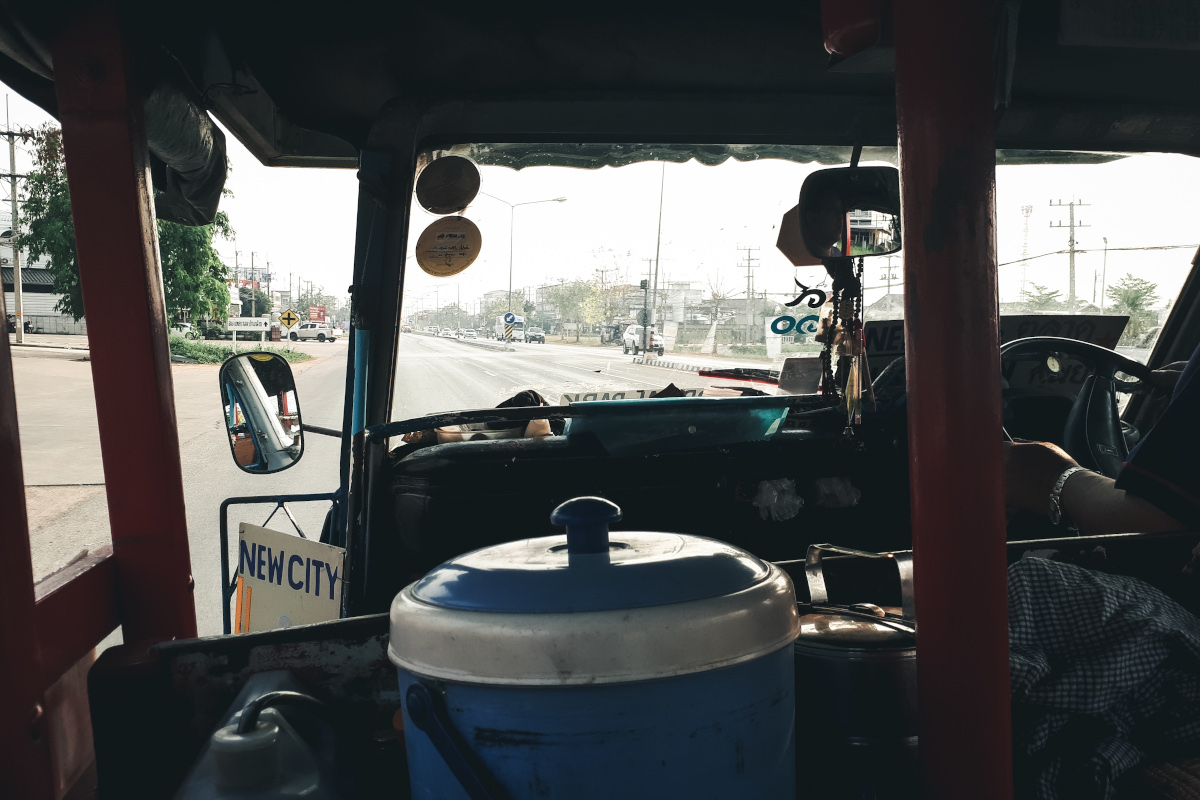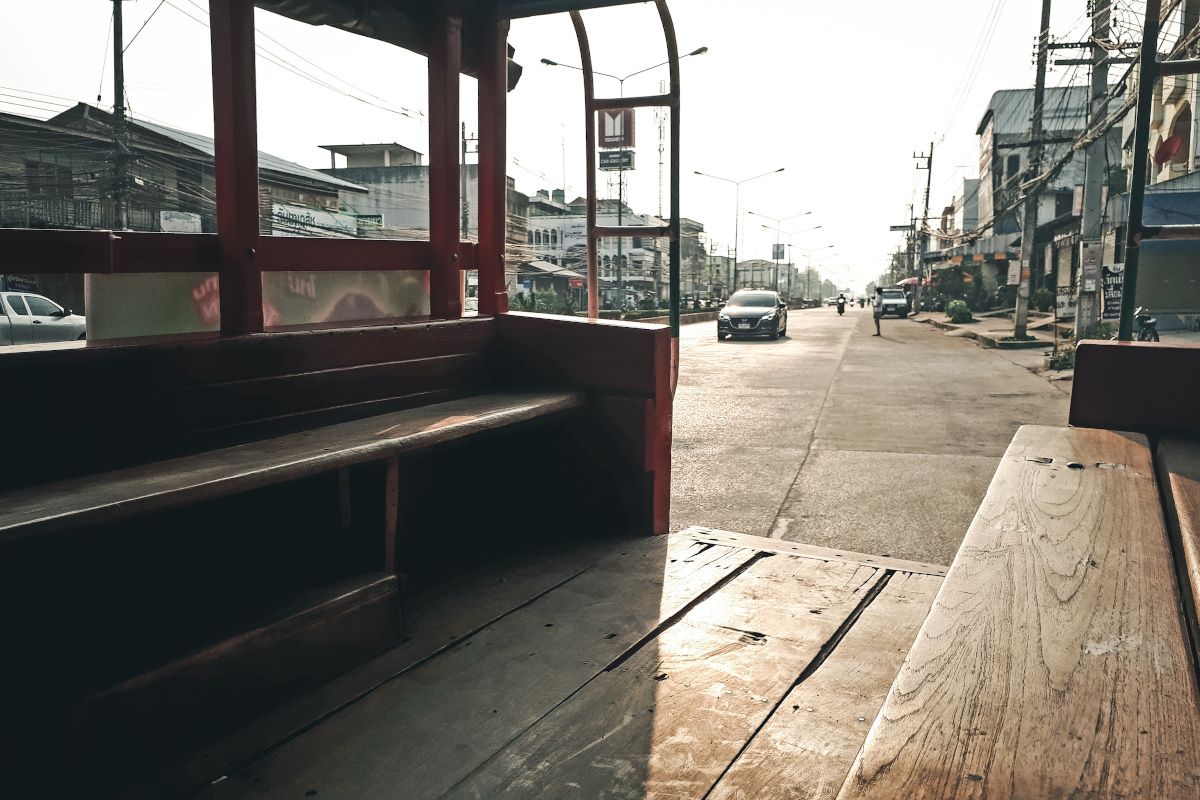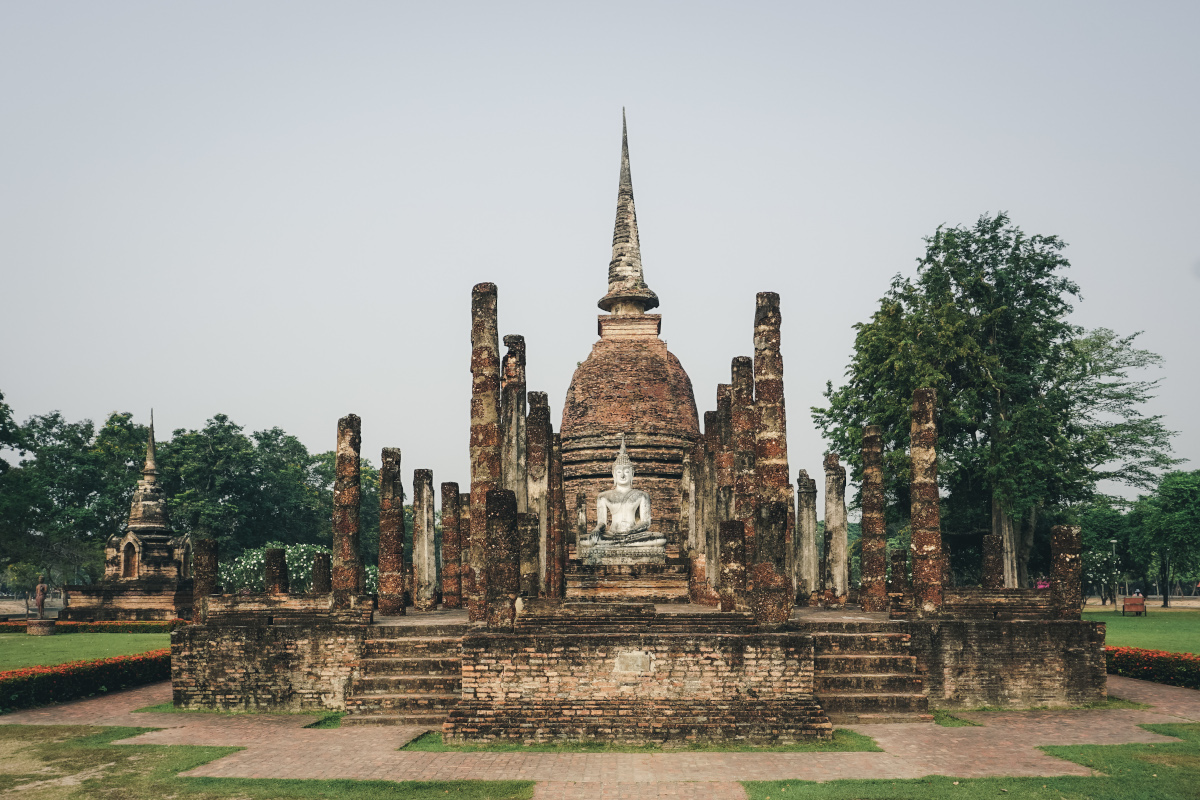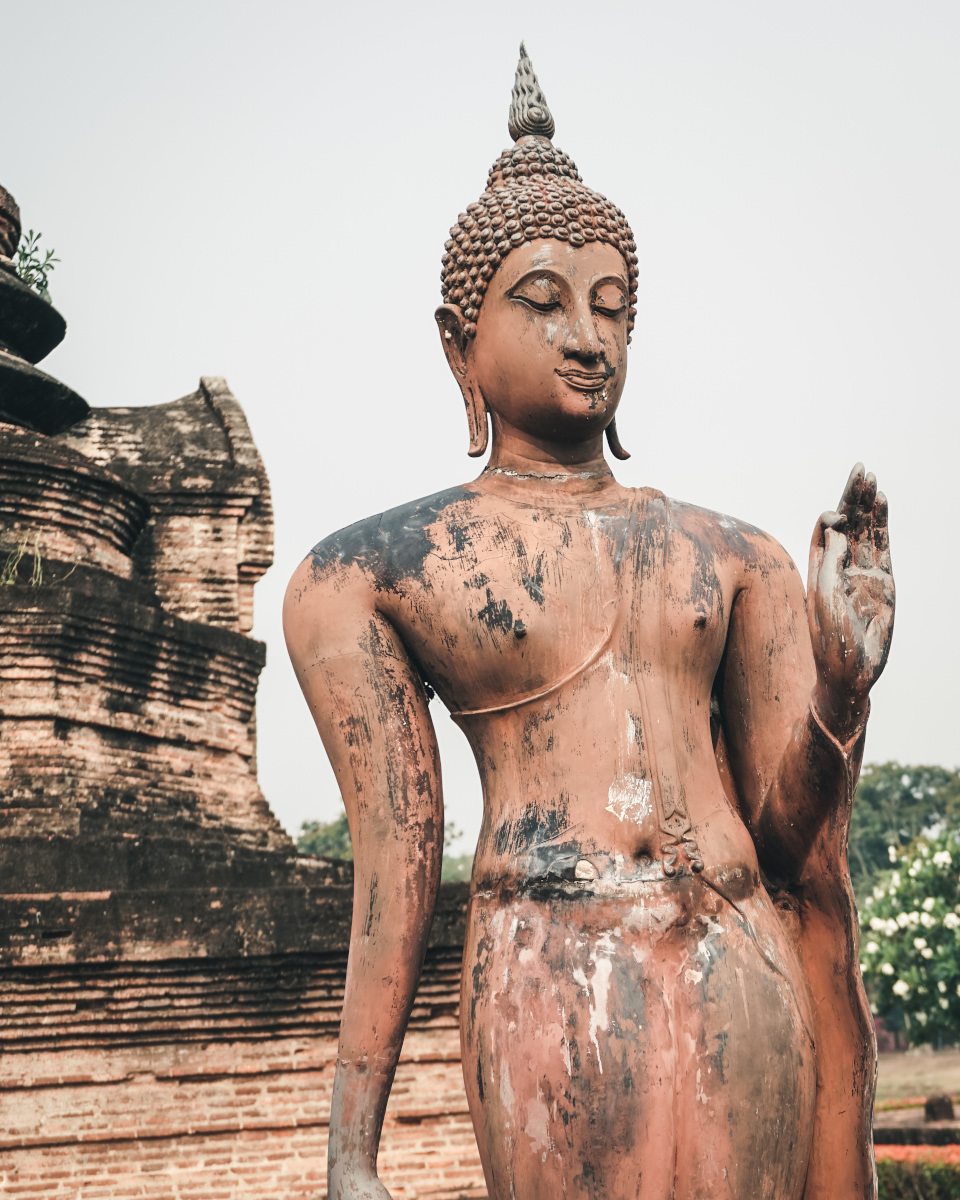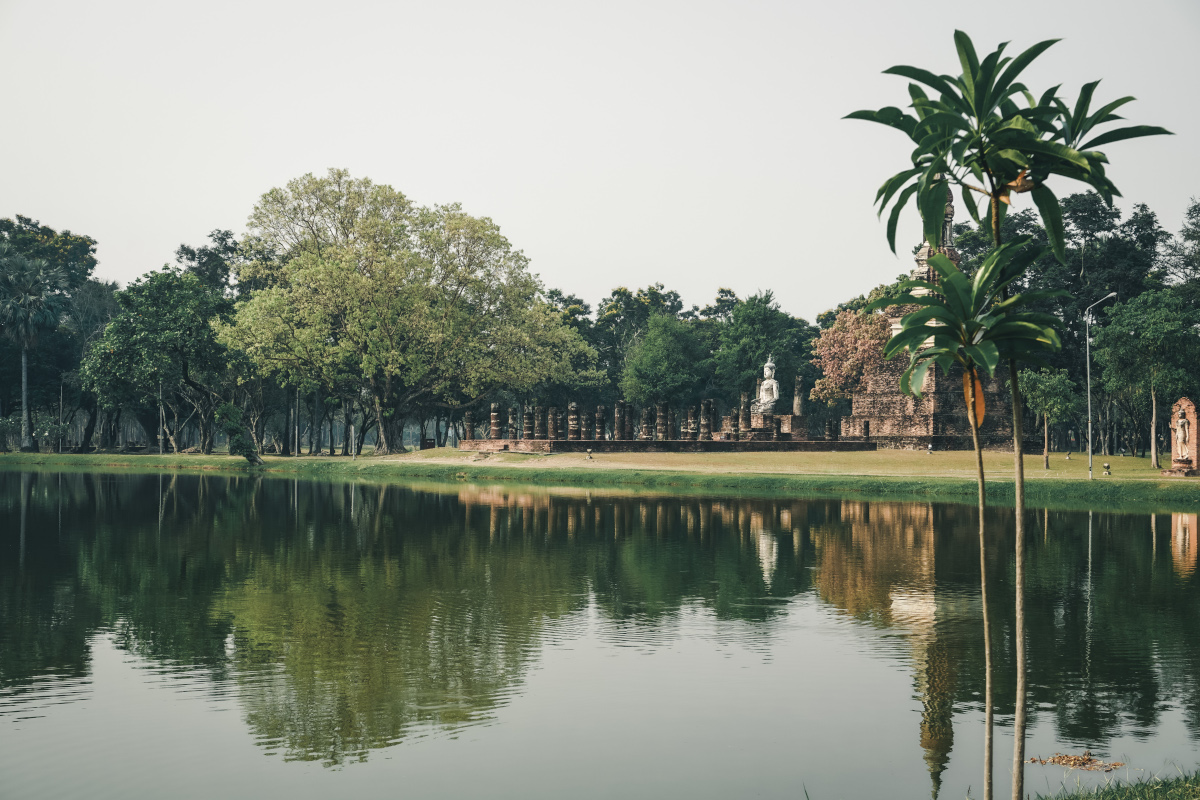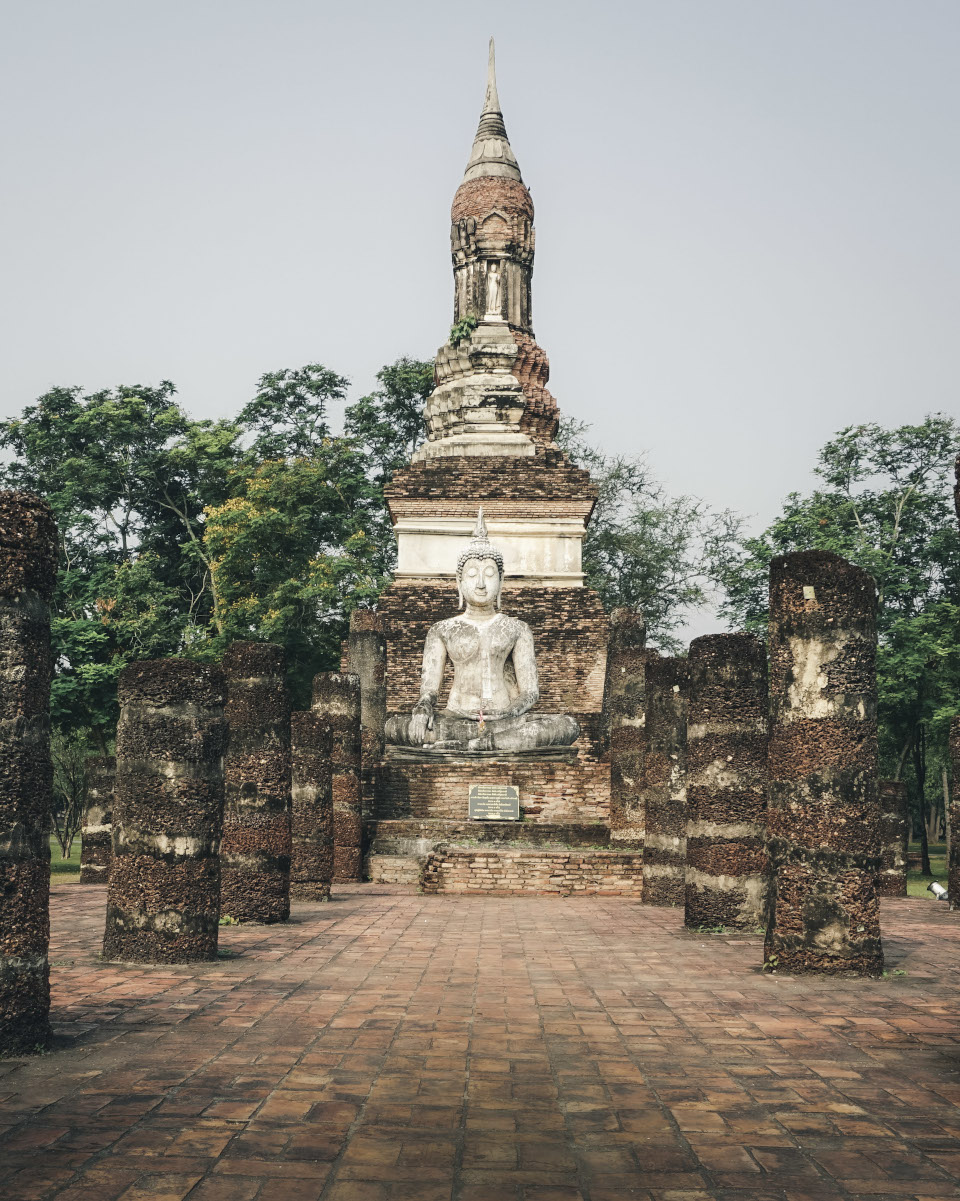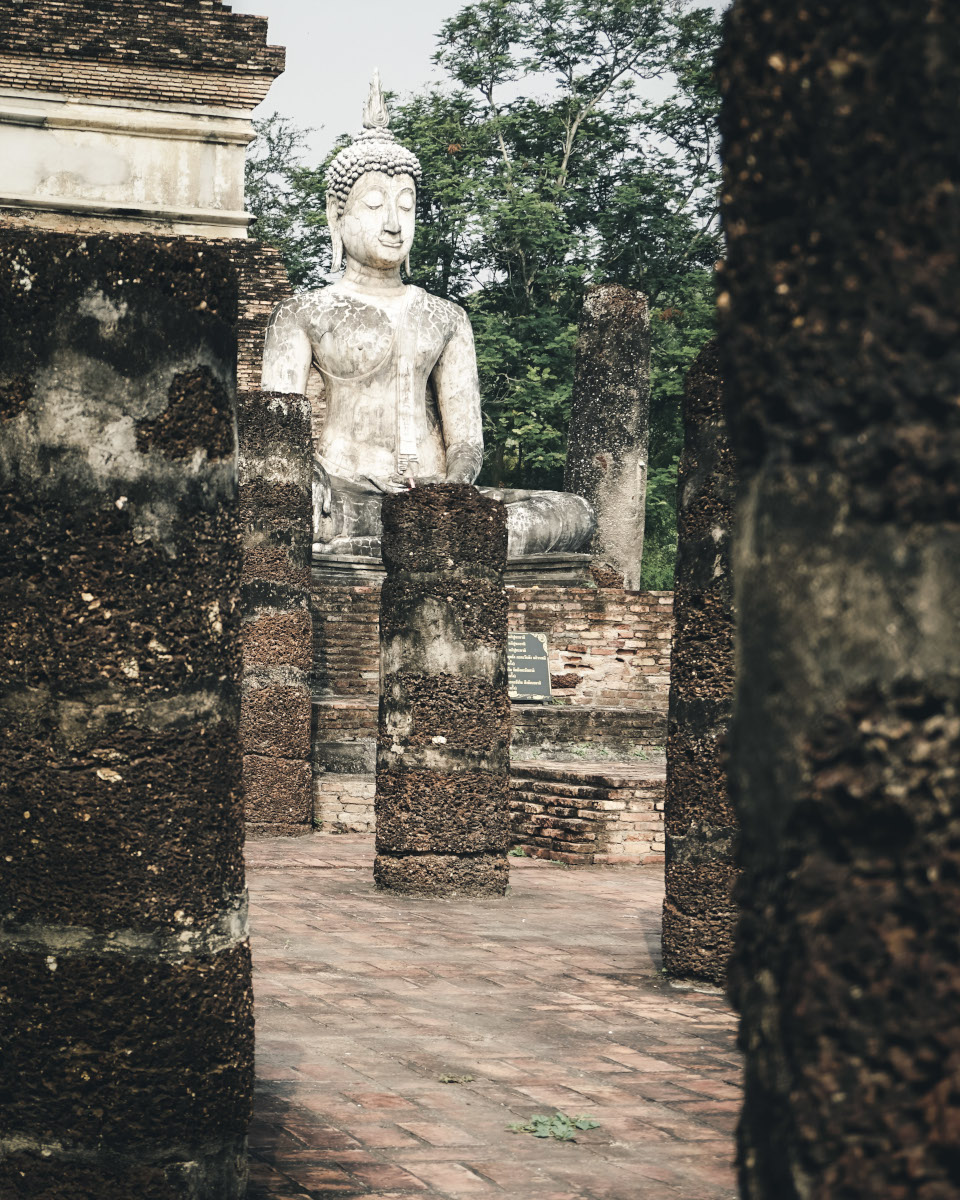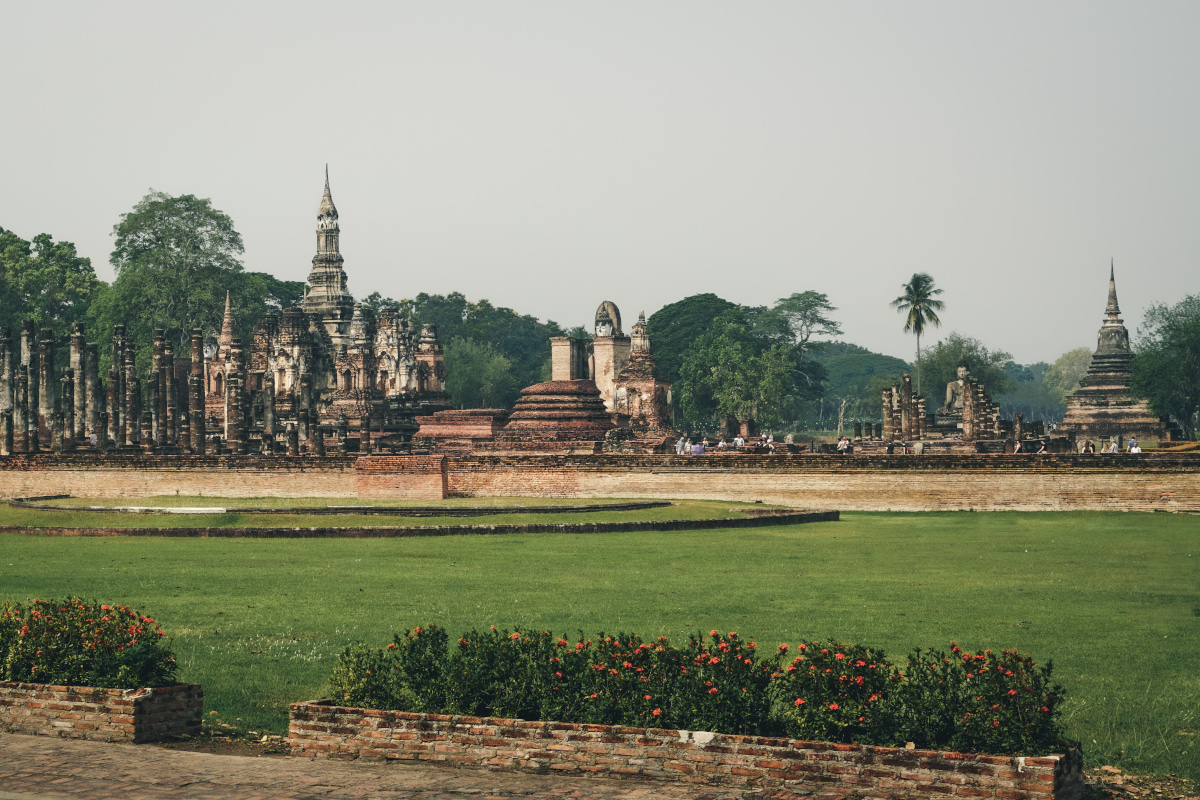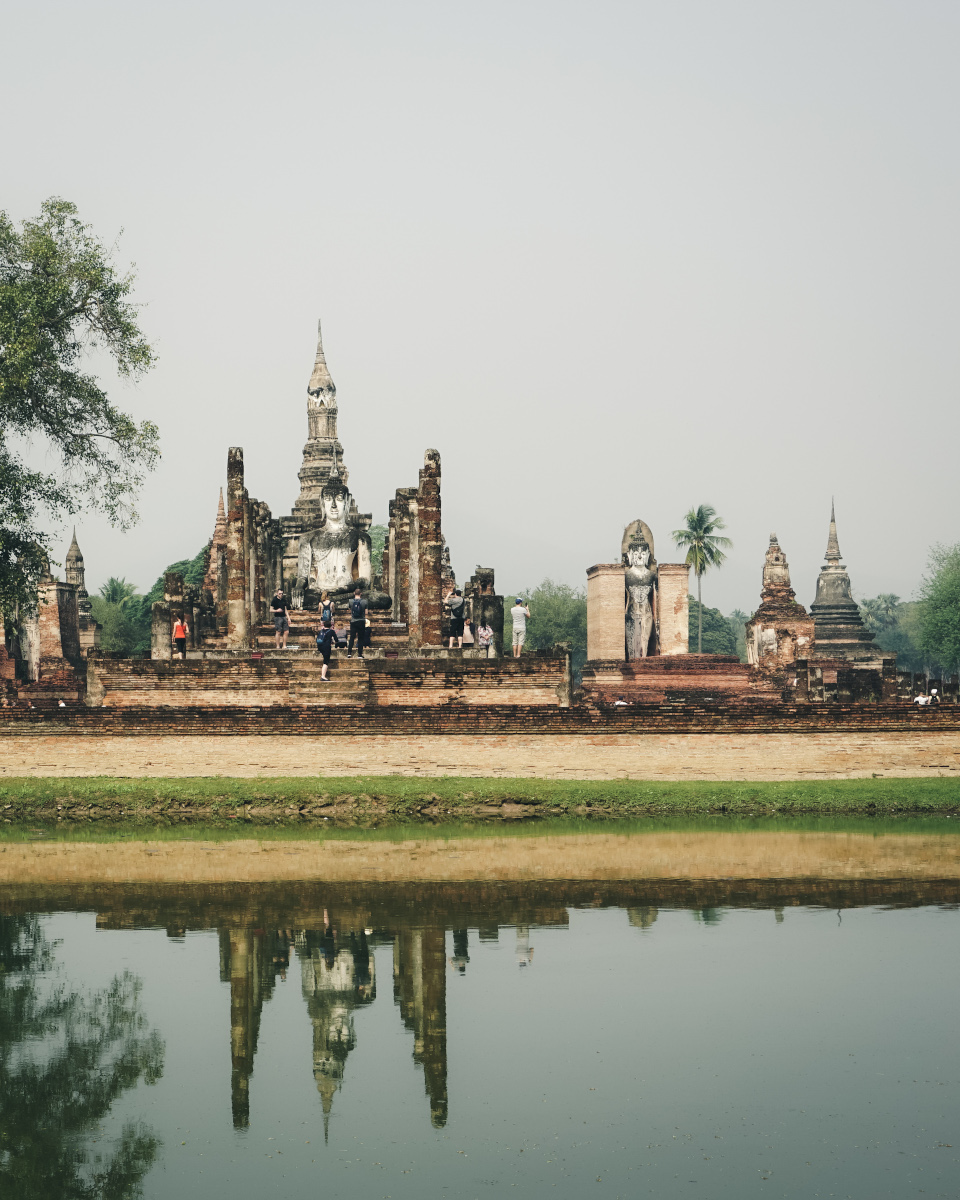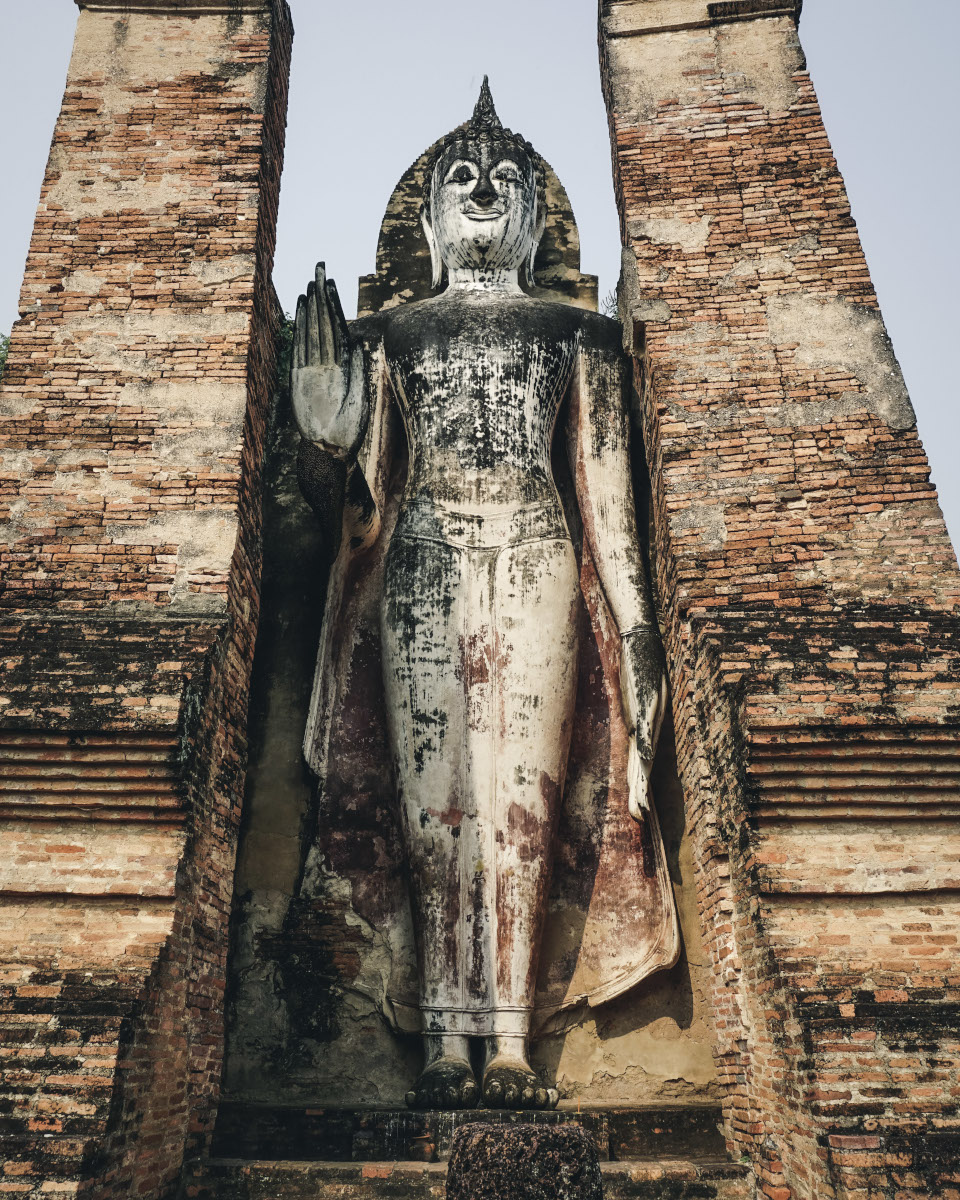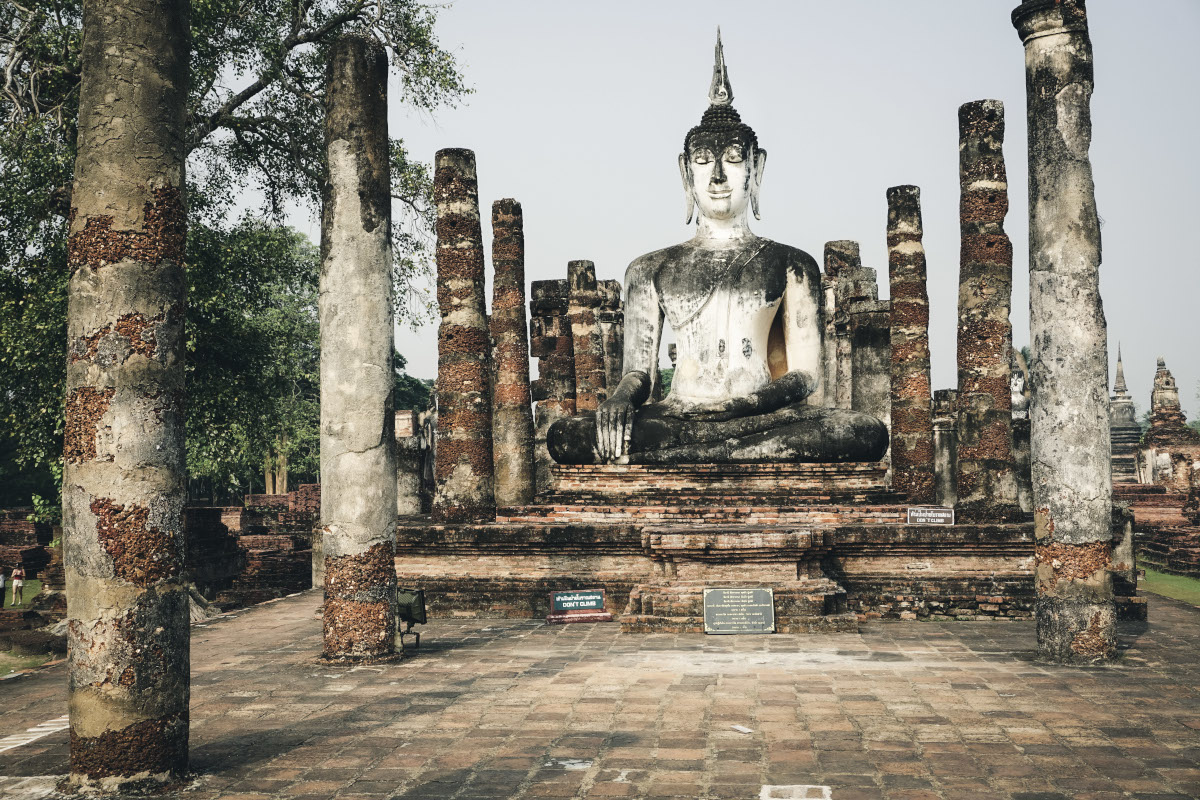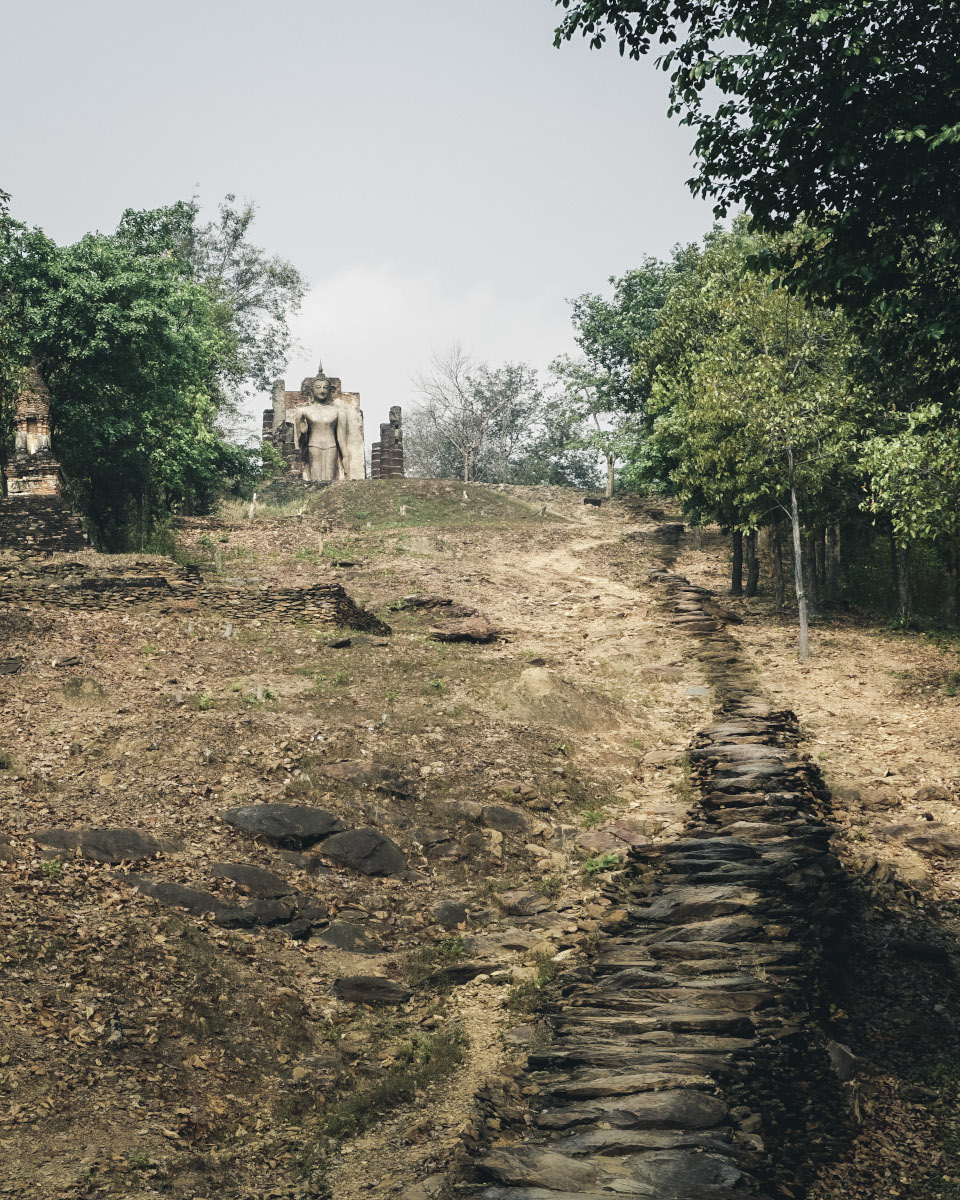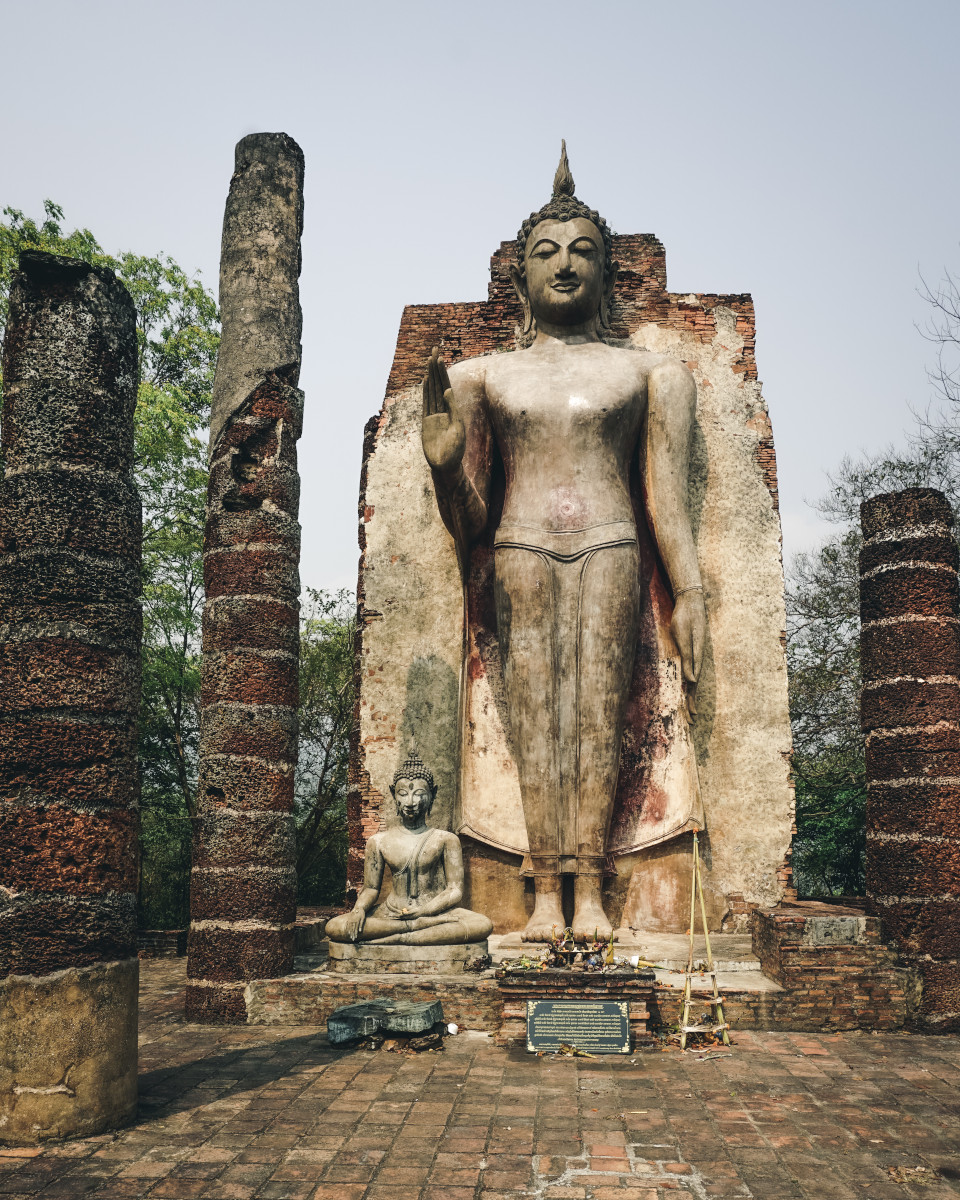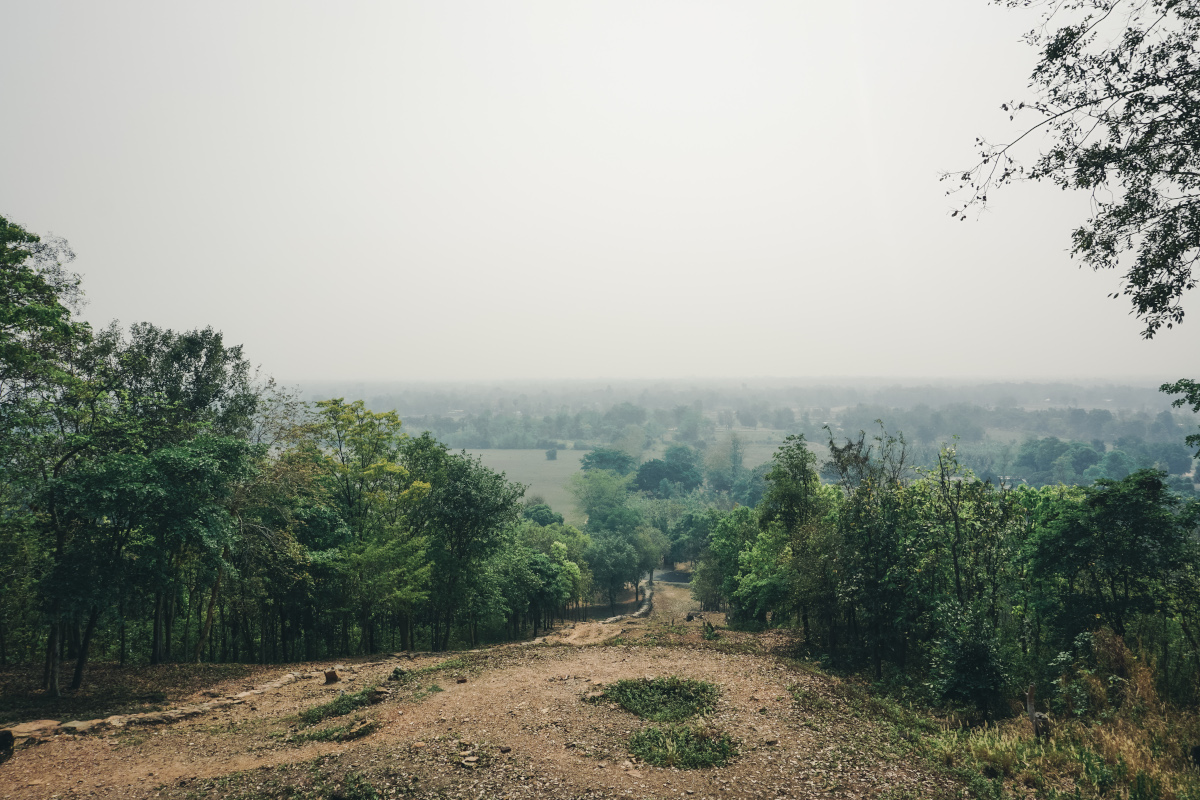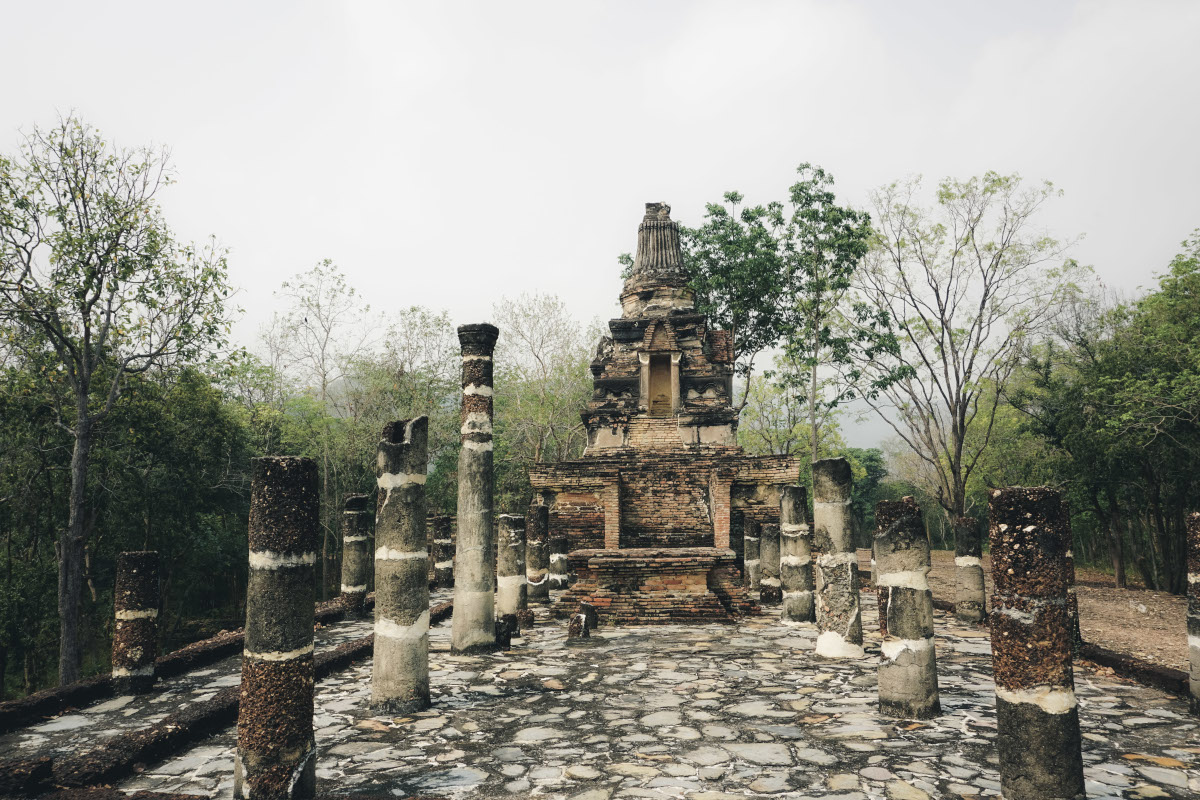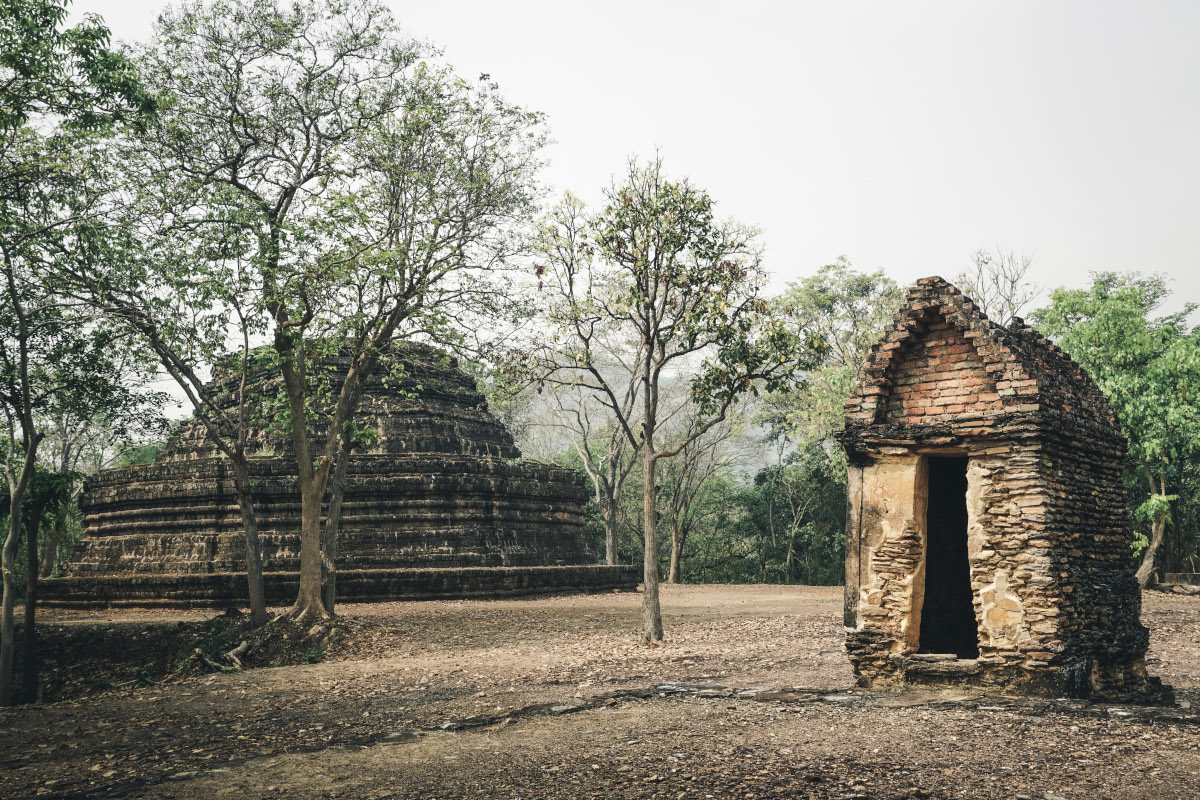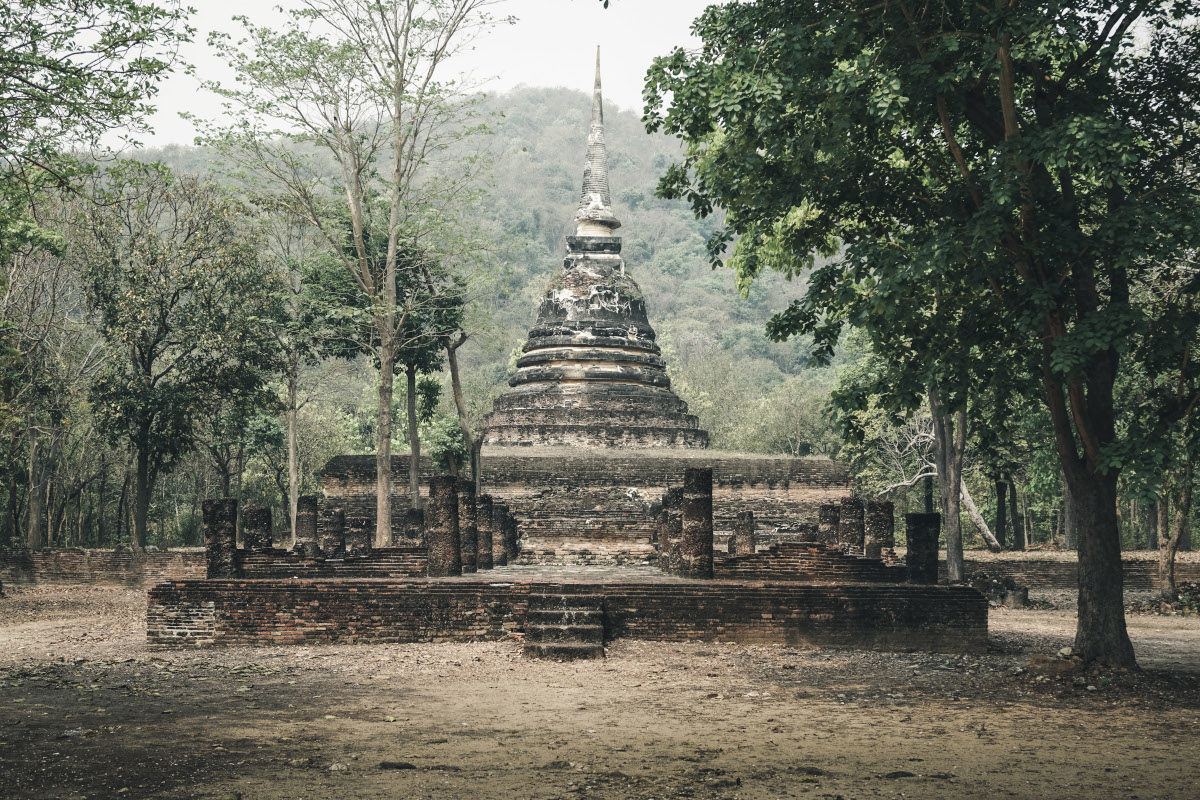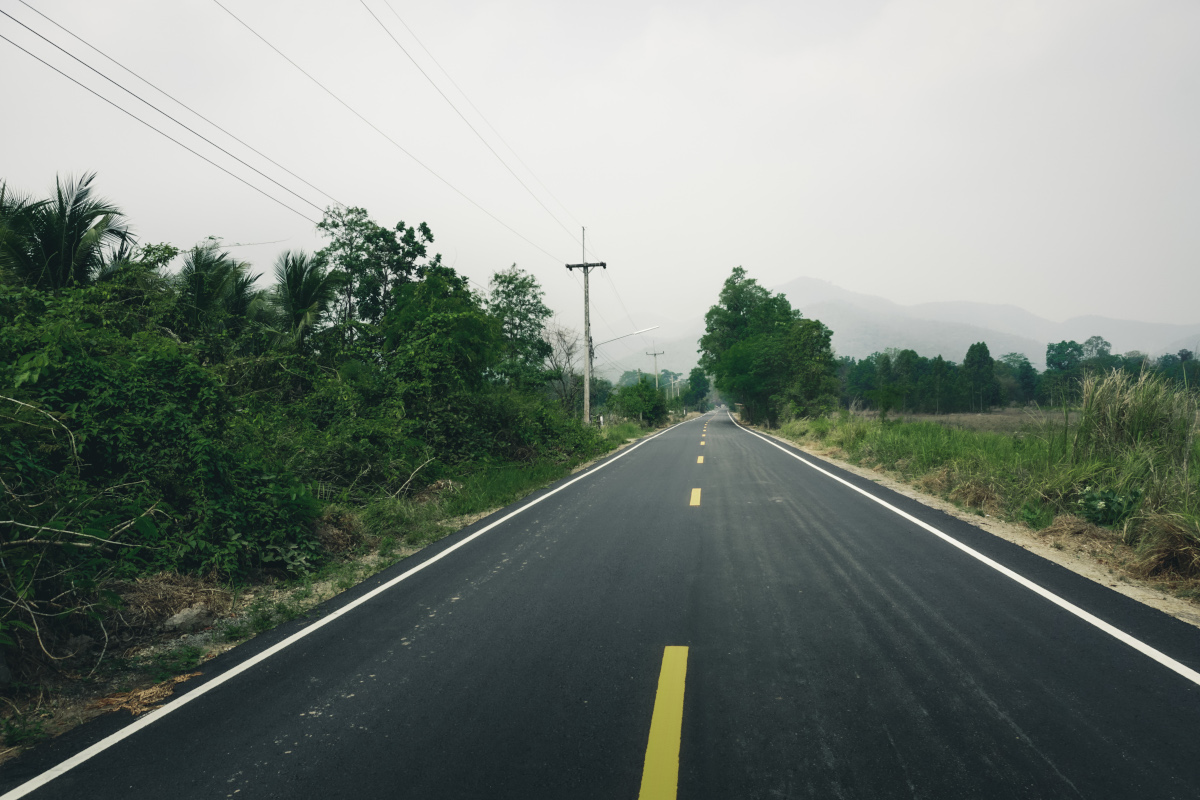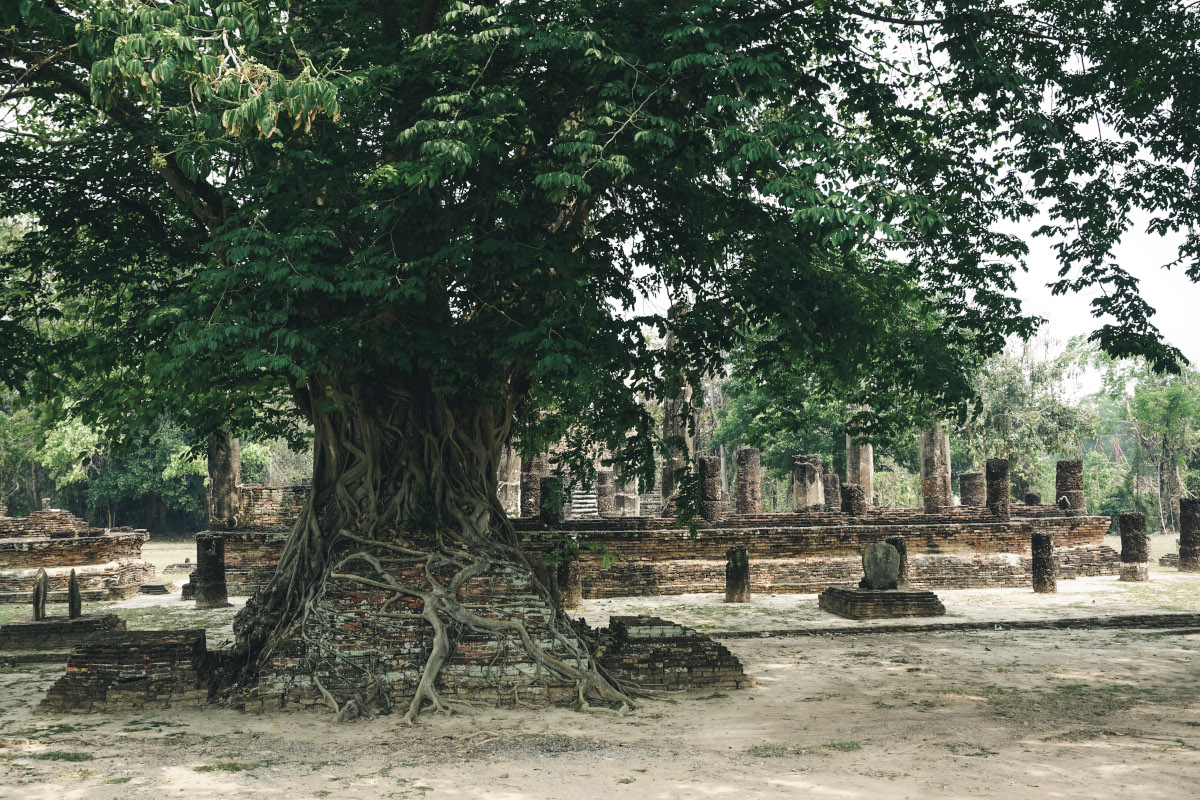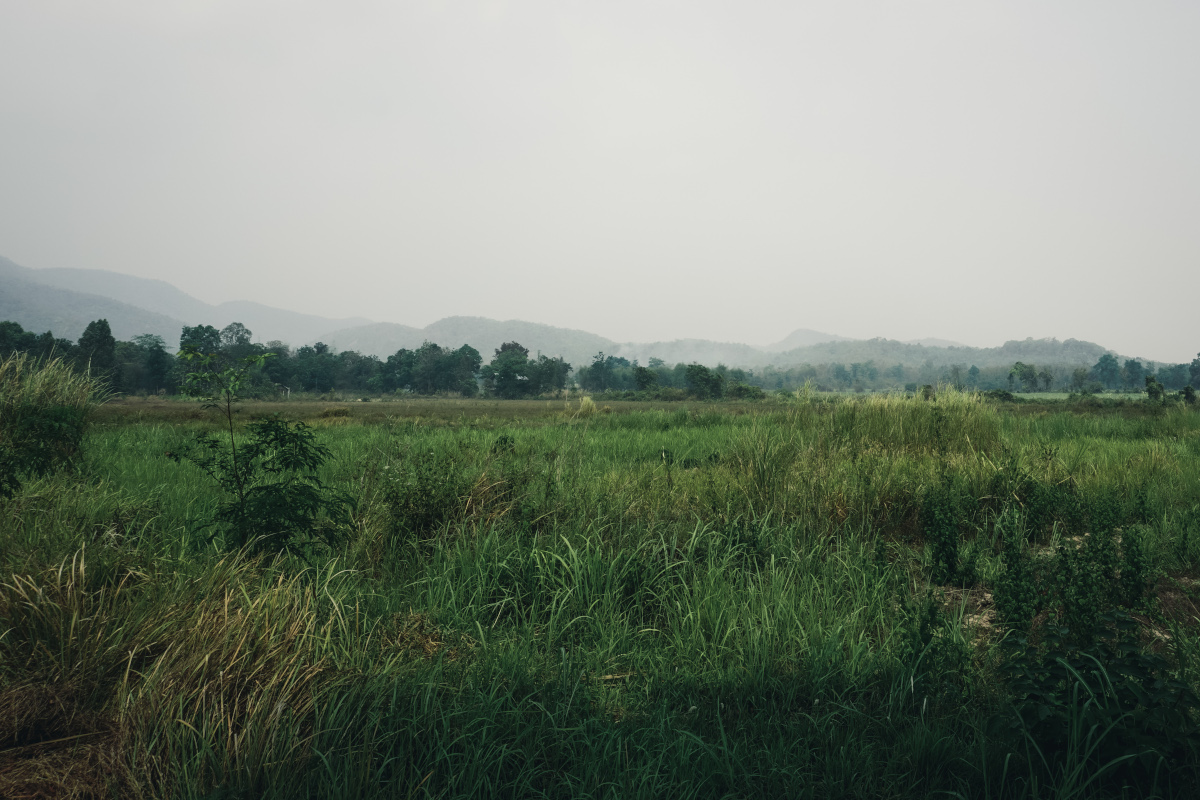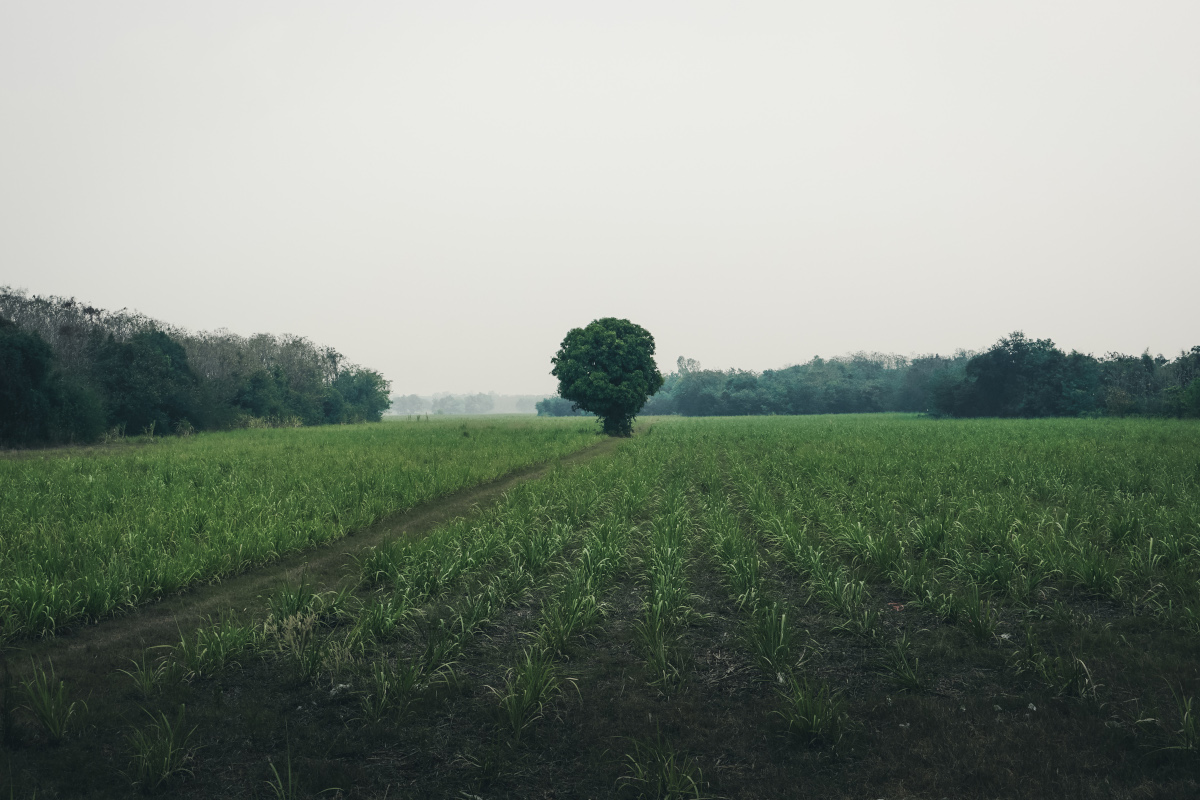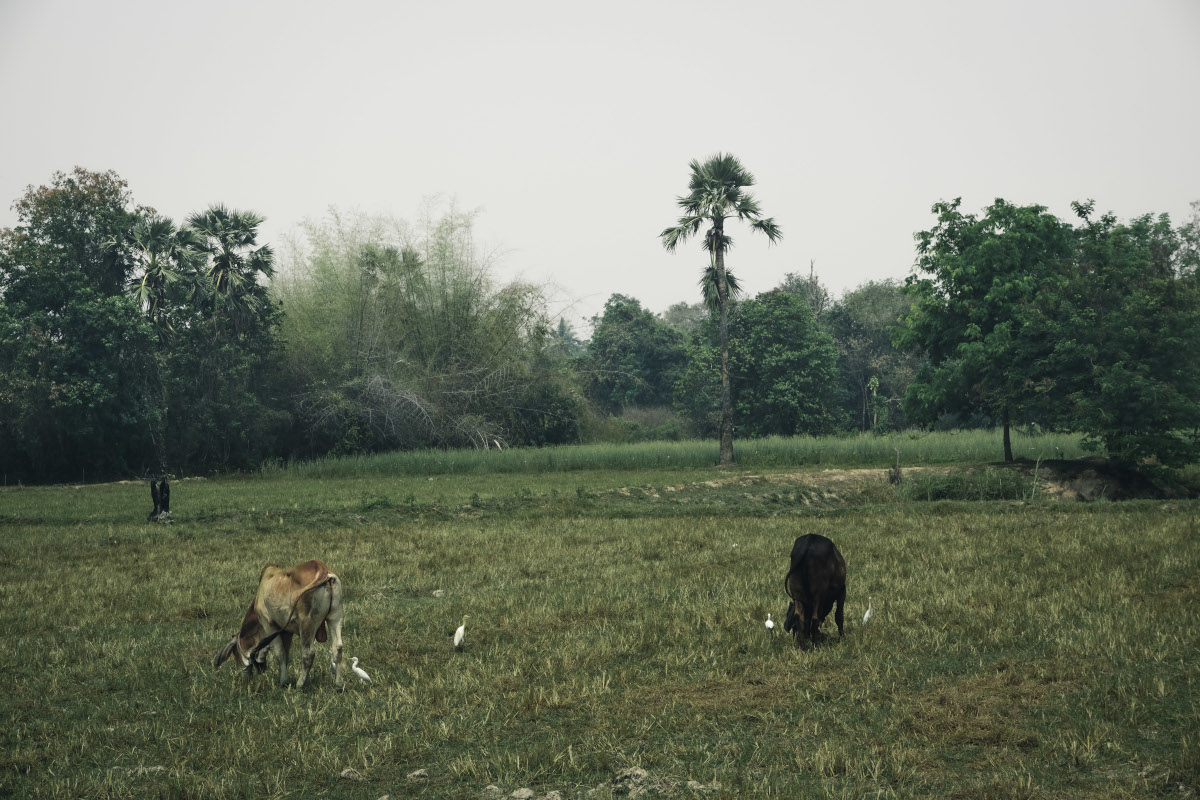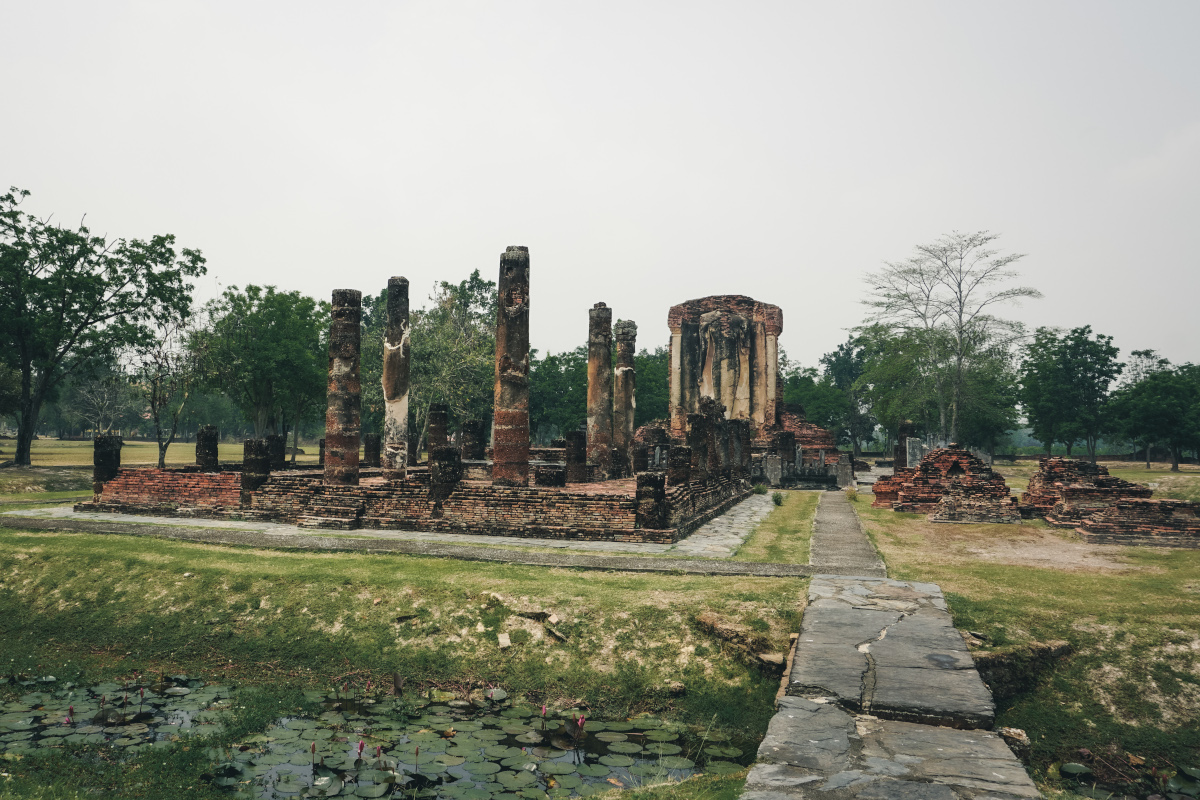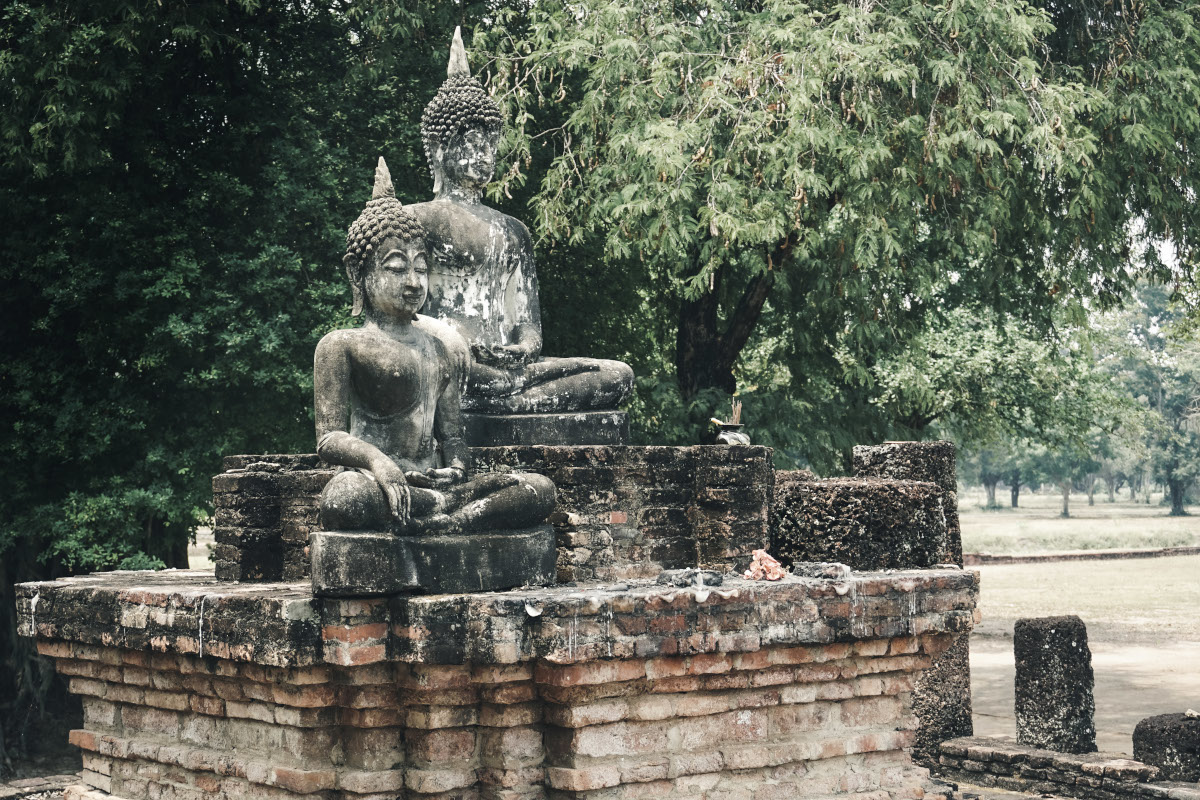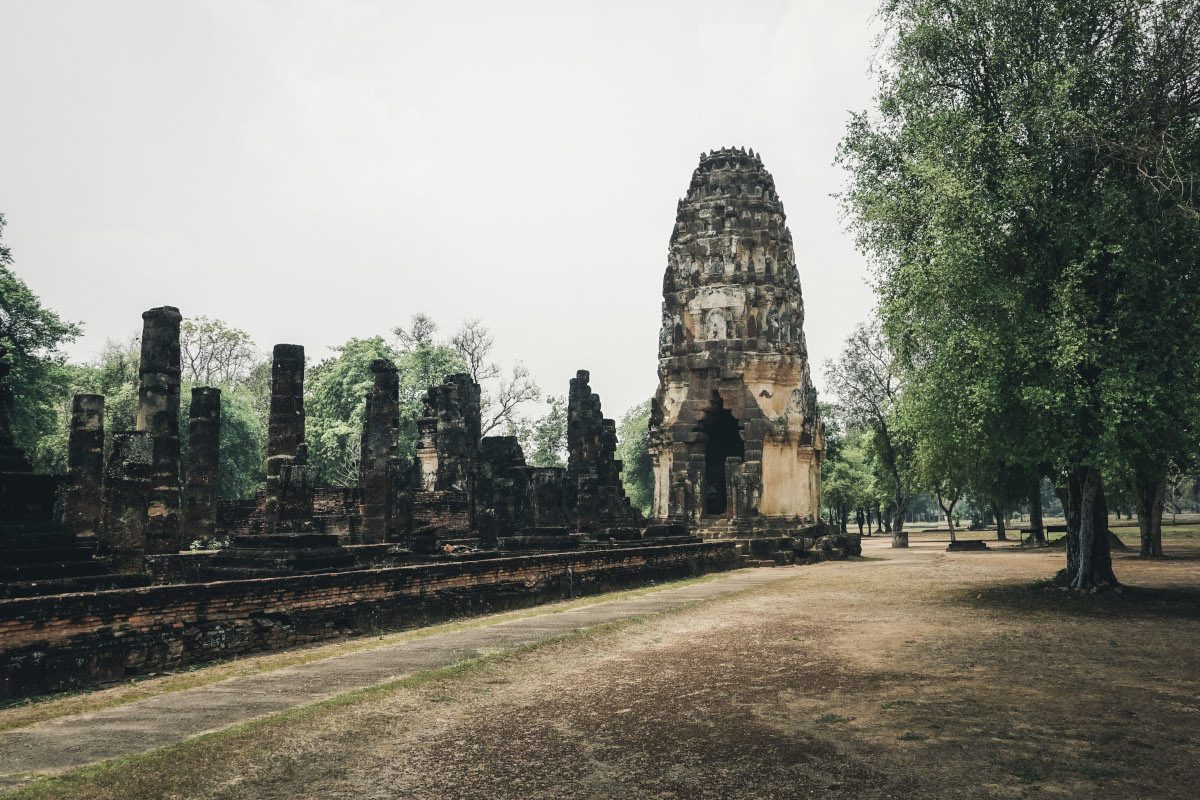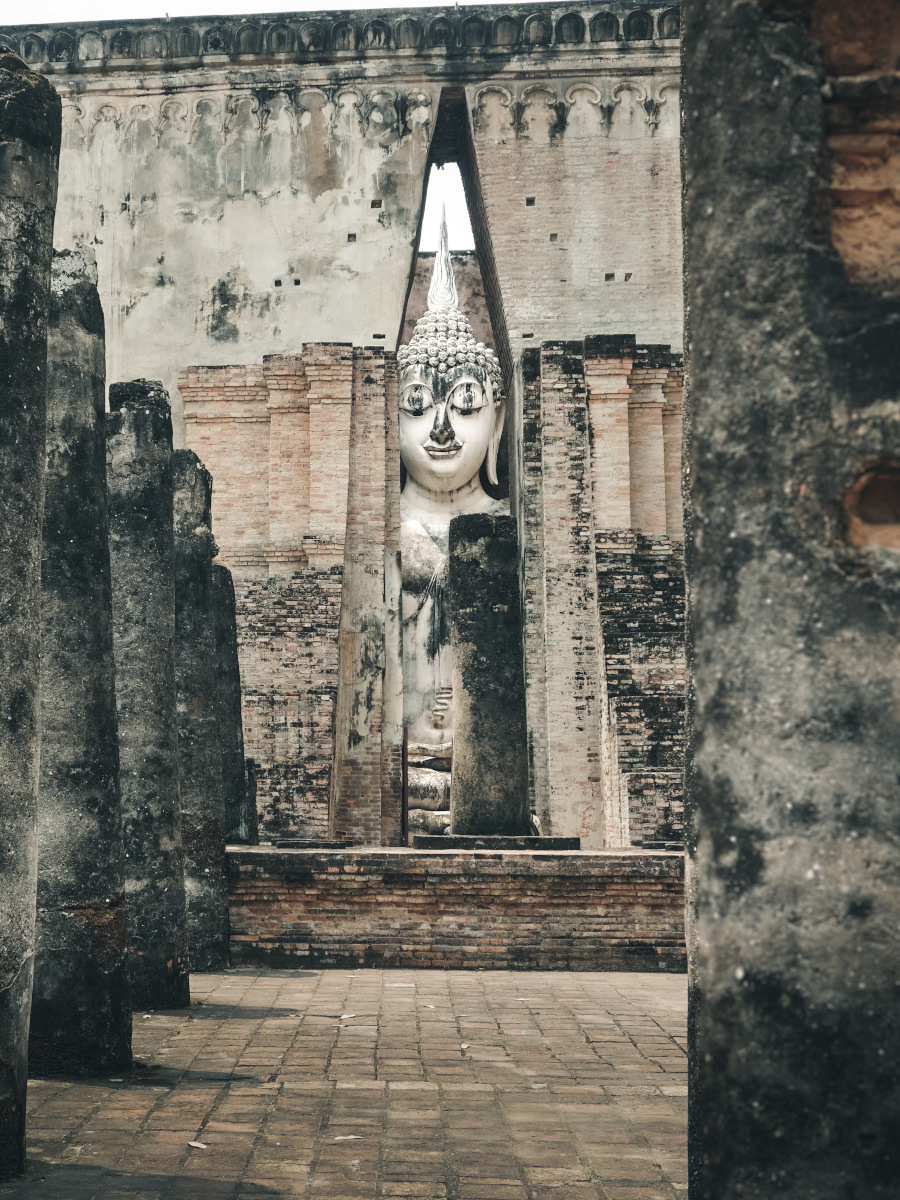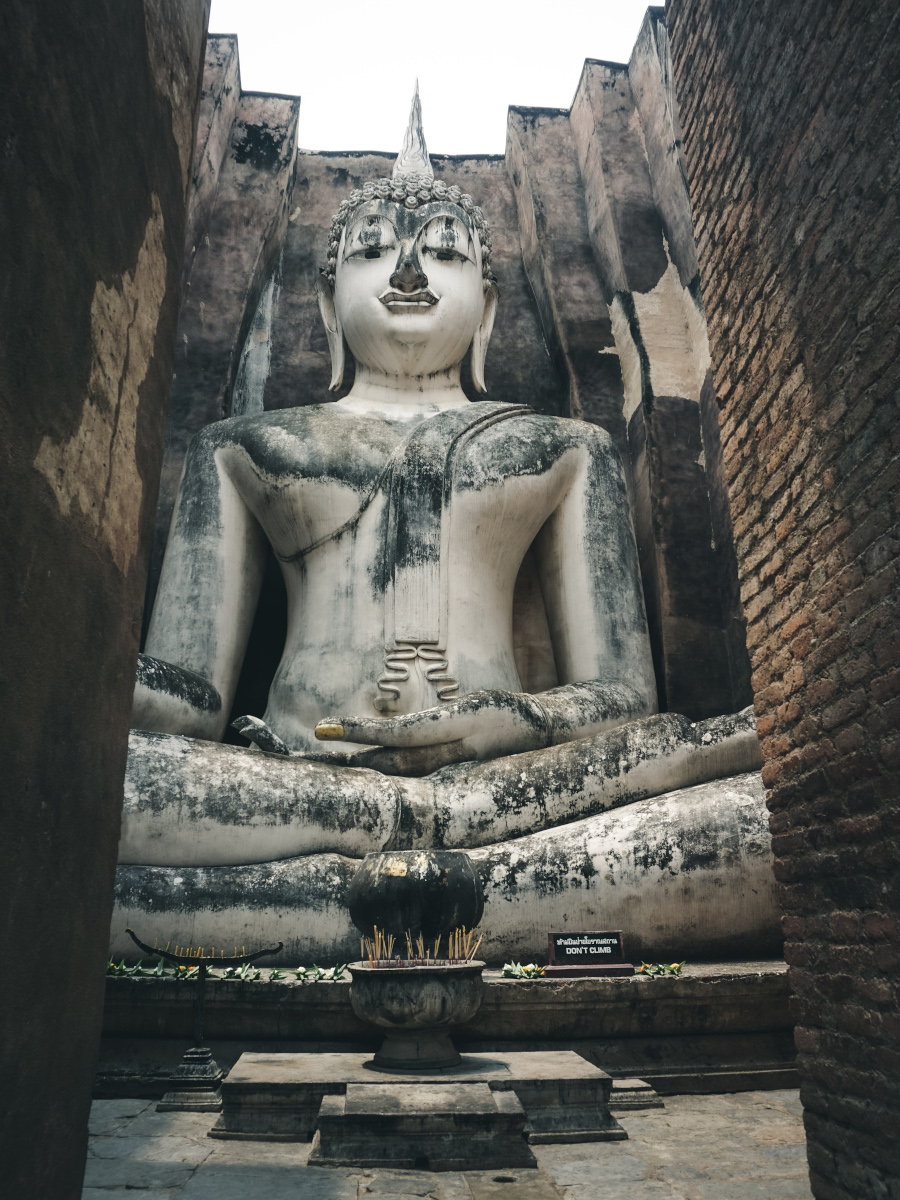Thailand was one of the few countries that was never colonized and is free from western influences. A fascinating world that is shaped by Buddhist culture awaits you in Thailand. Everywhere in the country you can find monks or lavishly decorated temples and holy places. There are approximately 300,000 monks and over 35,000 temples in Thailand. Most modern temples with their golden decorations, countless Buddha statues and architectural details attract not only devout Buddhists, but also countless tourists. But there are also many temples from bygone days, of which only ruins can be seen. There are even entire ruined cities in Thailand that have been lovingly restored and give an authentic insight into the history of the country. Mainly Sukhothai should be mentioned here. The city is located in the north of the country and is also known as the cradle of Thailand. In the 13th century the Thai conquered what was then the Khmer settlement and made Sukhothai the first major power center of the Thai. Ruled by King Ramkhamhaeng, the father of Thailand, the Thai spread the Buddhist teachings and exerted great influence on the surrounding regions. The kingdom grew in power and fame, and magnificent temples and palaces were built in Sukhothai. But the kingdom was subject to the up-and-coming Ayutthaya in the 14th century and fell apart. The restoration of the city, which was then declared a UNESCO World Heritage Site, was not completed until the end of the 1980s. Almost 200 ruins of temples and palaces stand inside and outside the history park. The park is well developed for tourism, but not nearly as crowded as Ayutthaya. Those who can’t get enough of temples and are interested in Thai culture and history are in good hands in Sukhothai. On my travel blog I will report about the sights of Sukhothai and give you an insight into my trip to the cradle of Thailand. Have fun reading my travelogue!
The five areas of Sukhothai
The historic Old Sukhothai is divided into five areas that extend around the center of the former royal city. If you click on a link below, you will be taken directly to the corresponding temple or area. I only mention the attractions that I visited myself. I’ve also marked the temples and important addresses on the map. Here you can also see my route because I explored the historical park by bike.
Center
A city wall surrounds the rectangular center of Sukhothai, which is approximately 250 hectares in size. The highlight in the central area is the royal temple Wat Mahathat, which is also the largest temple in the complex. Wat Thrapang Ngoen is located on a huge water reservoir with a Buddha looking out over the lake. To the north of this is Wat Sa Si on a small, idyllic island that can be reached via a bridge. There are a total of 16 temples within the walls.
North
In the north there is a huge Khmer temple complex, which has remained very natural, with the Wat Phra Phai Luang. To the west of it is the famous Wat Si Chum, in which a gigantic Buddha statue sits in a narrow masonry. Truly an attraction.
West
The ruins to the west have been less restored and are widely scattered. Several sights lie on a hill along a road that runs on the edge of the Ramkhamhaeng National Park. After the first temple Wat Saphan Hin, the Wat Phra Bat Noi and the Wat Chedi Ngam are followed. A little further away is Wat Mangkorn.
South
A quiet country road leads to the southern area of Sukhothai. Here I visited Wat Chetuphon, which is badly dilapidated, but contains a headless Buddha statue. In general, the environment in the south is very beautiful and you get authentic insights into the life of the residents.
There are still a few temples in the east of Sukhothai, but I haven’t been there and unfortunately, I can’t report anything.
How to get to Sukhothai
Getting to New Sukhothai
The journey to the historical park is easy and runs through the nearby city of New Sukhothai. There is even an airport here, which is served daily from Bangkok. Minibuses are available for onward travel but must be booked in advance.
Getting here by bus is even easier. There is a bus station north of New Sukhothai with buses from Bangkok, Chiang Mai and Phitsanulok. I traveled from Ayutthaya to Sukhothai at that time. Tickets can be booked on site, but a reservation is also recommended here.
Bus and train tickets in Thailand can be easily and securely booked online via 12go.asia* It saves you from long searches and inquiries at the bus stations and protects you from rip-offs. The selection is large, and you will find most destinations through the portal.
I have only good experiences with 12go.asia and have bought tickets several times.
If you want to learn more about traveling by bike or public transportation in Thailand, check out my travel blog about Thailand.
Transfer to Old Sukhothai
From the bus station there are regular shared taxis for 30 baht in the direction of Old Sukhothai. I was the only passenger at the time and had the back seats to myself. Tuk tuks and taxis waiting for tourists at the bus station are significantly more expensive. Public buses also go to Old Sukhothai for around 15 baht. However, access is only possible from the main road (Jarodvithi Thong Road).
Getting around in Sukhothai historical park
There are many ways to get around the park. I opted for the bicycle because you are fast enough to see a lot, but slow enough to come into contact with people. In addition, all industry is prohibited within a radius of 12 kilometers, so the streets are quiet. The narrow country roads and beautiful landscape in the west and south are worth exploring. Bicycles can be rented everywhere. I rented the bike at my accommodation for around 30 Baht.
It is also possible to rent your own scooter and explore Sukhothai with it. However, you have to expect an additional charge for entry. The prices for scooters vary between 150-250 Baht for the day.
There are also tuk tuks at the entrances, which will also take you to the various areas. These trips are usually quite expensive, and I cannot recommend them because you are not completely free in your decisions.
If you prefer to travel in a group, there is a possibility to join a guided tour. You don’t have to worry about transportation, excursion planning, or food, but you can completely focus on the beauty of Sukhothai. I recommend booking a tour through Viator portal, where countless activities around the world can be booked easily and safely.
The center of Sukhothai
The central area of the Sukhothai historical park is open daily from 6:30 am to 7:30 pm. On Saturdays even until 9 pm. The entrance fee is 100 baht for foreigners and 10 baht extra for your bike. Walls surround the center, which is laid out in a rectangle. The entrance is to the east (see map) on the main street where the city’s hotels and restaurants are lined up. There are a total of 16 temples and several small lakes within the green park. I visited Sukhothai at the end of March and accordingly the sights were little visited.
Wat Sa Si
The first temple I visited is in the north on an island in an idyllic pond. A small bridge leads me to Wat Sa Si whose round chedi is still very well preserved. It is said that the ashes of King Li Thai are kept inside. A Buddha sits in the rectangular viharn in front of it and looks between some pillars in the direction of the bot. To the left of the main building is another smaller chedi with a walking Buddha in Sukhothai style in front of it. For me one of the most beautiful attraction in Sukhothai.
Wat Traphang Ngoen
My way leads me on to Wat Tra Phang Ngoen, whose square chedi and viharn are on the west bank of a huge pond. A seated Buddha statue looks out over an island in the pond where the remains of the bot are located. You can reach the island via a small bridge. There is also a smaller chedi at Wat Tra Phang, in front of which there is a walking Buddha statue. You can see this on the right edge of the first picture.
Wat Mahathat
Further to the east is the largest and most important temple in the former Sukhothai kingdom. Wat Mahathat was built by the first King Sri Indraditya according to the concept of a mandala, which symbolizes the universe. His successors continued to build the temple into a huge temple complex. In addition to the gigantic central chedi, there are about 200 other chedis in the complex. Several standing and seated Buddha statues, some of which are 12 meters high, are spread across the entire complex.
The temple is very impressive and incredibly beautiful. However, Wat Mahathat is correspondingly heavily visited. This is where I met crowds of tourists for the first time, but I stayed inside for over an hour. You are constantly discovering new details. You can take wonderful pictures here, especially in the evening hours at sunset. The temples are also illuminated on Saturday evenings. The Loi Krathong Festival of Lights is also celebrated here in November.
If you want to know more about the temples of Sukhothai, check out this book. The author shows high resolution images and valuable background information on the temples and ruins of Sukhothai, Bangkok and Ayutthaya. I am sure that it will help you discover temples that you would not find without this book.
Short Facts for your Trip
Sukhothai has a tropical-monsoonal climate. The main season is characterized by cool (26°C) but dry weather (November to early March). It is very hot from mid-March to October. The rainy season starts in May and brings a lot of rainfall to Sukhothai. In addition, cloudy skies must be expected in March and April as the farmers burn down their fields. A huge cloud of smoke moves over the north of Thailand at this time. You can see it in my pictures. Therefore, a visit between October and March is recommended. However, I was here at the end of March and it was extremely hot (35°C) and dry. But it was very empty, and I had some of the temples to myself. You will find a climate table on the following page.
You can plan a day to visit the Sukhothai historical park. However, if you want to see everything and take your time, you will need several days. It is also worth planning in the nearby Ramkhamhaeng National Park.
There are many places to stay in New Sukhothai, but I recommend staying right in the old town. The cities are a good 45 minutes apart. Back then I stayed at the Old City Guest House in a simple single room. The operators speak English very poorly but are very friendly and helpful. I rented my bike directly from the accommodation. For solo travelers who don’t need much, I can only recommend this hotel.
In Sukhothai, shared taxis run along the main road for a few baht. As everywhere, Tuk Tuks also run for significantly more money. You can also book this for a tour through the history park, but I recommend exploring the temples on your own. The best thing to do is to rent a bike or a scooter. You can usually even rent these at your accommodation. Bicycles cost around 30-40 baht and scooters between 150 and 250 baht per day.
For the arrival and departure, I recommend booking directly at the bus company counter. The hotel usually charges a surcharge. You can also reserve tickets conveniently online via 12go.Asia*
No special equipment is required for the visit to Sukhothai. In the hot temperatures you should wear a hat. Sunscreen and insect repellent should be standard in the tropical climate anyway. In addition, a rain poncho can be useful in the rainy season. When visiting the outdoor areas, be sure to bring enough water with you. Sturdy shoes are also an advantage in the temples, as there are many stumbling blocks.
In order to get the full splendor of the Thai temple complex on your pictures, it is best to take a wide-angle lens with you. For the many details of the temples, of course, a lens for macro photography is also ideal. A tripod and filter for long exposure are also practical if you don’t want to see tourists in your pictures.
The western area of Sukhothai
To get to the western part of Sukhothai, I followed the main road NH12 for about 3 kilometers until a small road turns left. There is a small ticket counter here, but it was not manned at the time. Usually you pay another 100 baht entry here. Most tourists avoid the west as the sights have been less restored and are sometimes miles apart. In addition, most of the temples are located on hills in the forest, as the area borders the Ramkhamhaeng National Park. However, I can warmly recommend this area, because here, in addition to the temples, the landscape is also beautiful.
Wat Saphan Hin
Only a few hundred meters behind the ticket counter is the first highlight on a hill about 50 meters high. Wat Saphan Hin means something like temple of the stone bridge and is based on the stone stairs that lead up to the temple. Halfway there is a small chedi on the left, but at the summit a standing Buddha 12 meters high watches over old Sukhothai. A significantly smaller Buddha sits next to it. It is said that King Ramkhamhaeng himself regularly visited Wat Saphan Hin to pay his respects to the Buddha.
The ascent is arduous in the hot temperatures, but the view of the idyllic landscape of Thailand compensates for the effort. However, as already mentioned, visibility was severely restricted in March due to the cloud of haze in the air.
Wat Phra Bat Noi
Further south on the road, another path leads up the hill. At the top one comes across a well-preserved chedi with images of the Buddha in the niches. In front of it is a crumbled viharn. But that’s not all, because behind the first temple is a large octagonal chedi, the upper part of which has crumbled. Nevertheless, the chedi looks incredibly beautiful in the middle of this forest. Smaller buildings, which look like the entrance to an underground tunnel, stand in front of it and served the monks as a mediation room. In the times of the kingdom, the western area was called Aranyika and monks came here to meditate in the peaceful surroundings of the forest.
Wat Chedi Ngarm
The next sight is also on a hill in a forest. The translation of Wat Chedi Ngam means temple of beautiful chedi. In fact, the bell-shaped chedi is very simple, but beautiful. A crumbled viharn, on which half of the pillars are preserved, stands in front of the chedi.
Wat Mangkorn
I continue cycling along the road that leads back towards the center of the historical park after a curve. At a junction I reach Wat Mangkorn. A mangkorn is a dragon-like mythical creature and is also called Makara. There are some sculptures of this being at the temple and are supposed to protect it. I was particularly impressed by a mighty tree, the roots of which grow through the masonry. This temple is definitely worth a visit.
I decide to visit the south next but take the southern route through the surrounding villages and landscapes. First, I pass the Phra Ruang Dam, which is not particularly beautiful. This is followed by green meadows and fields, farmers, and a few small houses. In a small shop I buy bananas for more energy and cold water against the heat. It’s a beautiful ride through the rural region with the mountains of Ramkhamhaeng National Park soaring in the distance. I can absolutely recommend exploring the area around Sukhothai.
The southern area of Sukhothai
I reach the south and pass several farmhouses and pastures with cattle. The population density is increasing again here, but the southern area is not very popular with tourists either. There are about a dozen ruins here in very different states. You do not have to pay entry and from the center of Sukhothai old city you can reach the area through Pratu Namo.
Wat Chetuphon
Wat Chetuphon is the largest temple in Sukhothai’s southern part and is around 2 kilometers from the city walls. In contrast to the other temples, Wat Chetuphon does not have a main chedi, which is usually the most important structure in a temple. Instead, there are four large images of Buddha in a mandapa. A different posture of the Buddha is depicted in each direction, only the two directions east and west are preserved. In both statues, however, the head is missing. I think this sight is very worth seeing and the area in the south is also worth visiting.
If you’re looking for a travel guide to Thailand, check out this book. The authors give travel tips especially for individual and low-budget travelers. In addition, not only the popular sights are described, but also less well-known places are mentioned. This has enabled me to discover great travel destinations that I would not have found without these books.
The northern area of Sukhothai
I drive back from the south towards the city center, then follow the main road and turn right onto a road that leads me to the northern area of Sukhothai. The north is more popular with tourists due to its proximity to the center. There are many different temples here, but most visitors focus on just two attractions. Entry here costs 100 baht again. I marked the ticket counter on the map. Be careful with the opening times, because the north is not open as long as the center.
Wat Phra Phai Luang
I drive to a large-scale facility that is very natural. In the center is the Wat Phra Phai Luang, which is one of the oldest temples in Sukhothai. In fact, these are the remains of the Khmer people when the place was still a branch of the powerful Angkor Empire. King Jayavarman VII, who also had the world-famous Bayon Temple built in Angkor Thom, is said to have commissioned Wat Phra Phai Luang. The prang with typical Khmer elements is well preserved. The buildings show influences from the Khmer, the Kingdom of Sukhothai and the Kingdom of Ayutthaya. This is a wonderful place to go exploring and admire the beauty of various architectural styles. You should definitely visit Wat Phra Phai Luang.
Wat Si Chum
Further west is one of Sukhothai’s most famous and most visited temples. Wat Si Chum consists of a viharn and a mondop, which contains a gigantic Buddha statue. From a distance the Buddha looks at me through a crack and gives an idea of his size. The statue rises 15 meters, making it the largest representation of Buddha in Sukhothai. According to a legend, it is also called the speaking Buddha. King Naresuan is said to have climbed into Mondop at night unnoticed and made a speech to his troops to reaffirm the soldiers’ morale. Since the soldiers could not see their king, they are said to have believed that the Buddha was speaking to them. While this story is difficult to believe, the magic and beauty of this statue is real.
Accommodation and hotels in Sukhothai
There are many places to stay in New Sukhothai, but I recommend staying in the old town. The cities are a good 45 minutes apart. Back then I stayed at the Old City Guest House in a simple single room. The operators speak English very poorly, but are very friendly and helpful. I rented my bike directly from the accommodation. I can only recommend this hotel for solo travelers who don’t need much. Of course, there are other options for staying overnight in Sukhothai. You can find a list of the accommodations under the following link.
I hope you enjoyed my travelogue about the temples in Sukhothai. Further down the article you will find even more attractions near Sukhothai. Moreover, on my Thailand Blog I show you other beautiful travel destinations in Thailand and share valuable tips and experiences for your trip to Thailand. Did you like my blog post? Was I able to help you? Then I would be happy if you recommend my travel blog, leave a comment, or follow me on Instagram. Thanks for reading and have fun on your vacation in Thailand.
Highlights around Sukhothai
Ramkhamhaeng National Park
Those who would like to stay longer in the region of Sukhothai will find other attractions nearby. For example, I wanted to visit Ramkhamhaeng National Park, but unfortunately the weather didn’t cooperate, and I continued my journey. In the national park there is the possibility to hike up an exciting path through the jungle and camp at the summit. In the morning you have an incredible view of the area and with a little luck you can look over the clouds. Tents and equipment can even be rented from the rangers at the entrance. There are also several waterfalls in the national park, such as the Sai Rung waterfall, Lam Kaew waterfall or Hin Lang waterfall.
Si Satchanalai Historical Park
Those who can’t get enough of temples and culture are in good hands in the Si Satchanalai Historical Park. The historical park is only 55 kilometers north of Sukhothai and was formerly an important city in the Sukhothai Kingdom. Today you can explore around 130 restored monuments in the park. Tours to the historical park are offered in Sukhothai, but traveling independently is certainly more exciting and cheaper.
Phitsanulok
For city lovers, Phitsanulok, which is 60 kilometers east of Sukhothai, is ideal. As in every Thai city, there are several temples to visit that are worth seeing. For example, the Wat Phra Si Rattana Mahathat or Wat Ratchaburana. In the immediate vicinity of Phitsanulok there are several national parks that guarantee incredible natural spectacles. Especially pictures of the Thung Salaeng Luang and the Phu Hin Rong Kla show wonderful natural moments. Buses run regularly from the New Sukhothai bus station to Phitsanulok.
Heartland Talayluang
A somewhat kitsch destination is a heart-shaped island in a heart-shaped lake. The Sacred Heartland Talayluang lies north between Old and New Sukhothai. I haven’t been there myself and don’t know if it’s worth it. But certainly, a nice place for the sunset. As it is close to a major stadium, getting there by bus is certainly easy.
The references marked with an asterisk (*) are so-called commission links. If you click on such a referral link and buy something, I get a small commission from the provider. For you, the price does not change! I see it as a small thank you for my work and look forward to any support


